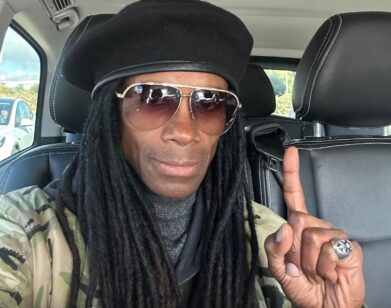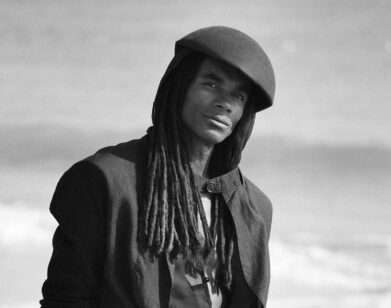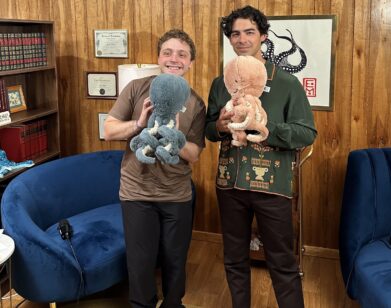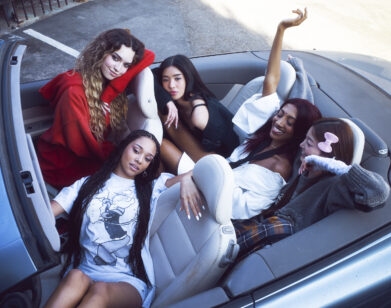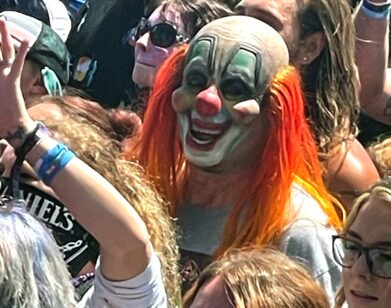Giorgio Moroder
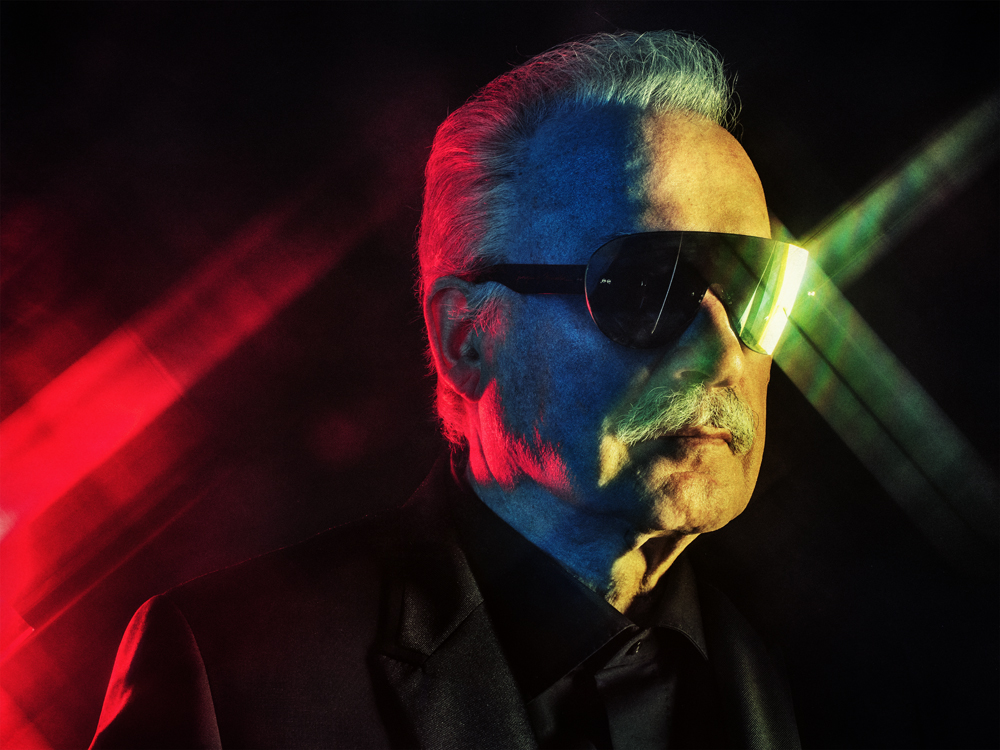
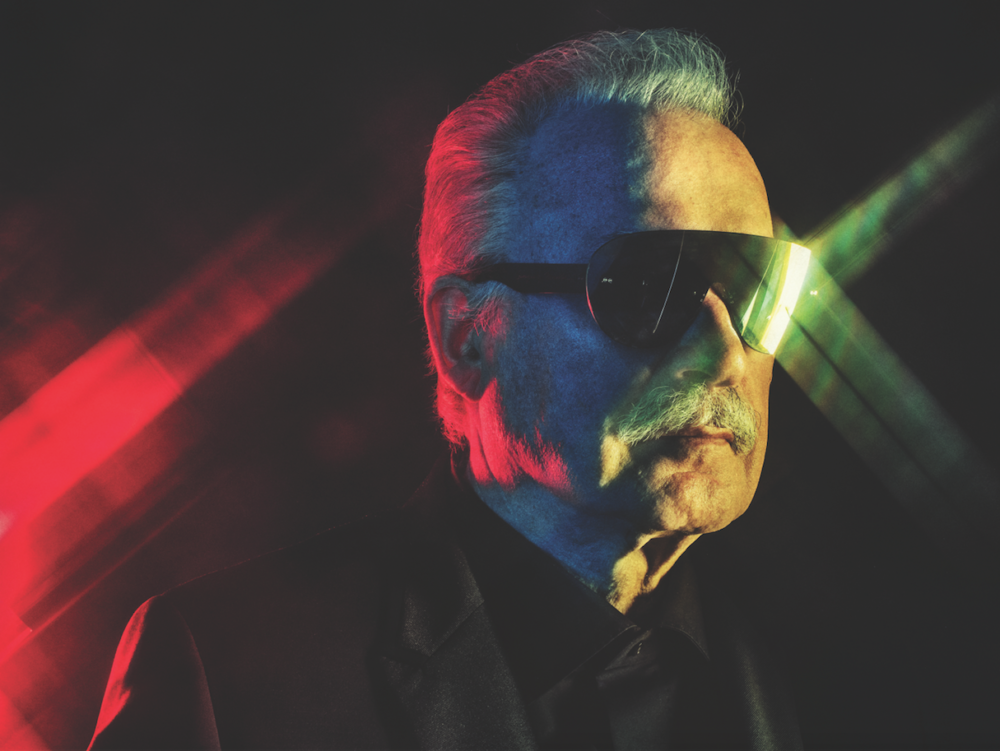
GIORGIO MORODER IN NEW YORK, JANUARY 2015. STYLING: SARAH ELLISON-PRAT. SUIT (COURTESY OF SAKS FIFTH AVENUE): PAUL SMITH. SHIRT: ERMENEGILDO ZEGNA COUTURE. SUNGLASSES: SUPER & GIORGIO MORODER. GROOMING PRODUCTS: ORIBE, INCLUDING SOFT LACQUER HEAT STYLING SPRAY. GROOMING: NICOLAS ELDIN FOR ORIBE HAIR CARE/ART DEPARTMENT.
Of all the delicious moments on Daft Punk’s 2013 Random Access Memories—from Pharrell urging the world to “Get Lucky” to Julian Casablancas mewling “Instant Crush”—one guest vocalist stood out sharply from the fray, because he wasn’t even singing. Instead, Giorgio Moroder appears on the nine-minute track “Giorgio by Moroder” in something of a fireside chat, reminiscing in his Alpine lilt about his musical aspirations as a teenager in Ortisei and his introduction to the synthesizer, which he presciently knew was “the sound of the future.”
It speaks to Moroder’s iconic status that our robot overlords traced his life so reverently—and hints at the stories Moroder could tell us, as the man who had such a big hand in shaping disco in the 1970s. As a young musician living in Munich with a keen fascination with synthesizers, Moroder met a then-unknown American singer named Donna Summer in 1974 and partnered with her to merge electronic innovations in music with pop sensibilities. It was the funky, futuristic synth hooks on “Love to Love You Baby,” “I Feel Love,” and “Hot Stuff” that helped to identify disco as inclusive, sexy, and modern. With Summer and his production partner, Pete Bellotte, Moroder was irrepressible, at one point releasing a new album nearly every six months and a parade of gold and platinum singles. With his sound well honed, he expanded his oeuvre into soundtracks, his first being the seminal score for Alan Parker’s 1978 prison drama Midnight Express, for which he won an Oscar for Original Score. And he continued to experiment with electronic studio technologies, including his entirely digitally recorded 1979 album E=MC², one of nearly a dozen solo records that he’s released.
As disco ebbed in the 1980s, Moroder’s work continued to thrive on the silver screen; he brought his grand, impressionistic electronic soundscapes to films such as Cat People (1982), Scarface (1983), Flashdance (1983), and a reconstruction of Fritz Lang’s silent-era classic Metropolis (1984). He also continued to create hits throughout the decade, producing and co-writing songs for David Bowie, Blondie, and Freddie Mercury, among others. And he paired up with Summer one more time for the song “Carry On,” which won the first-ever Grammy for Best Dance Recording in 1998.
Since Daft Punk nudged Moroder back into the spotlight, synthpop in all its permutations has come back around to one of its architects in a big way, with everyone from Lil Wayne sampling his music to Coldplay asking him to remix one of their songs. Now at 74, Moroder is officially unretired-two agencies rep him for DJ gigs all over the world, and this month, he releases his first studio album in three decades, Déjà Vu (RCA), which features collaborations with Sia, Charli XCX, Britney Spears, and Kylie Minogue.
For all this, as he tells his longtime admirer Moby, he’ll graciously accept the title of “the pope” of electronic dance music—but go easy on that “grandfather.”
MOBY: Before talking to you today, I watched on YouTube some of the early videos that you had done, some early TV shows. I think they’re really special.
GIORGIO MORODER: [laughs] You know what? There’s one, which is so embarrassing, a French show where I sang my first hit, “Looky, Looky.” I have this funny dress coat and a long shawl, and I was dancing.
MOBY: I’m familiar with it. I literally just watched it five minutes ago.
MORODER: [laughs] It’s so, so embarrassing. You know, that was the time then.
MOBY: The problem with the internet is that when we do embarrassing things now, they never go away. When did you first start to move away from being a solo artist to producing other people?
MORODER: I had one hit called “Son of My Father” in ’72. I found Donna [Summer] in ’74. I did one album called Einzelgänger, which was more of an experimental thing. Then I did some really bad things. I think the last one was E=MC². It did not sell that well. People like it, but it wasn’t a big hit. So I said, “I better stay away. I’m better behind the whole thing.”
MOBY: I have a very obvious question, but I think anyone reading this interview would want to know this. When you and Donna recorded “I Feel Love,” did you know that you were changing the course of music history?
MORODER: Yes and no. Not as much as I know now. I thought I had something special, the concept of having just a machine or a computer to do all the tracks, like hi-hat and all that stuff.
MOBY: I’m name-dropping, but David Bowie used to live across the street from me in New York, and one day we were having a barbecue, and he told me this story. I believe they were in Berlin at [legendary recording studio] Hansa by the Wall, and [Brian] Eno came with the 12-inch of “I Feel Love” and stopped everyone and forced them to listen to it and said, “This might be the best record ever made, and it’s the sound of the future.”
MORODER: I didn’t meet David for years and years, but the next time I do, I’m going to ask him about that. I used to record in that studio. It used to be Ariola’s studio, then they changed it to Hansa. That was a very interesting studio. It was on the second floor and it looked right across the Wall. And across the Wall, there was one of those guard towers. We were watching the soldiers in East Berlin watching us with binoculars, because there were always singers coming in. That was weird.
MOBY: It explains the sound of some of the records that were made in that studio.
MORODER: I lived there for about four years. You could not leave the city because it was closed, so you had to board a plane or drive through East Germany, which was always difficult. It was almost like on the front, like in a war, almost.
MOBY: I remember I went to Berlin right after the Wall came down. I first went to East Berlin, and all the buildings were old and falling down, and now when you go back to Berlin, you know you’re in the East because all the buildings are brand new and very tall.
MORODER: [laughs] Right.
MOBY: Can you think of one person who you wished you had been able to work with or produce that you weren’t able to?
MORODER: I was working with Sylvester Stallone on, I think, Rambo III [1988], and he asked if I could compose a song for Bob Dylan for the end credits. So I had a song in the style of Bob, maybe a little more commercial, and I did a demo. I went out to Malibu to see [Dylan] in this beautiful house, all wood. It was extraordinary. He heard the song about three, four times, and said, “Okay, well, I’ll call you tomorrow.” A few days later he called me and said he didn’t want to do it. That would have been the top of my wish list, to work with Bob Dylan. I still don’t know if he didn’t like the song or if he didn’t want to get involved with a movie like Rambo.
MOBY: I have another strange question. I was talking to a friend of mine who grew up in the music scene in the ’70s, and he was saying that in the early ’70s, everyone saw cocaine as a wonder drug that had no consequences, but by the end of the ’70s, everyone saw cocaine as the devil. When did you realize that cocaine was really hurting people?
MORODER: I think I’m the only guy in Los Angeles in the last 30 years who never took any. I was so afraid of not being in control. I knew a lot of my musicians used to take coke. I never saw them. They would hide it from me, so I wasn’t really aware of it. Creatively, I don’t think it was that great.
MOBY: So how often are you DJ’ing now?
MORODER: Last year I did, I believe, 20 gigs. In about a week I go to Singapore, then I go on tour with Kylie Minogue in Australia, then I go to New Zealand. I have, maybe, 15 gigs in the next few months.
MOBY: Wow. It’s funny, because you’re such an iconic, legendary figure, especially in the world of dance and electronic music. I think when younger generations see you DJ, they’re amazed that you actually exist, that you’re a real human being.
MORODER: [laughs] That’s probably the case. The kids go on the internet and check the songs out. Donna Summer and I had the hits more than 30 years ago. Certainly I look a little different now.
MOBY: That’s funny. I had friends who worked at DFA Records—they were all very young—and they were having a debate because of your name. Two of them thought you had invented the vocoder because your name sounds like a combination of Moog and vocoder.
MORODER: Of course I did not invent that.
MOBY: I think the vocoder was first invented in World War II to try to break spy code.
MORODER: I think it was invented even earlier, in the ’30s. Probably the military used it for different purposes.
MOBY: Now I want someone to make a documentary about the history of the vocoder, because it really is such a remarkable instrument. For years, I felt like the vocoder was the third member of Daft Punk. In the course of your life, have you ever met anyone who you’ve been truly intimidated by? Which is how a lot of people feel when they meet you.
MORODER: One time I met the future pope [John XXIII]. That was impressive. I was in boarding school, and we went on a trip to Venice. He was the cardinal of Venice, and they introduced me to him. Although nobody knew that he would become the pope.
MOBY: I’m sure that a lot of people, when they meet you, feel like they’re meeting the pope of electronic music.
MORODER: [laughs] “The pope” is good. “The grandfather” is less good. “The father,” yes.
MOBY: Maybe that should be on your business card. It should say, “Giorgio Moroder, the Pope of Electronic Music.” La papa.
MORODER: You can say, “I just interviewed the pope!”
MOBY IS A LOS ANGELES-BASED MUSICIAN, DJ, AND SINGER-SONGWRITER.

